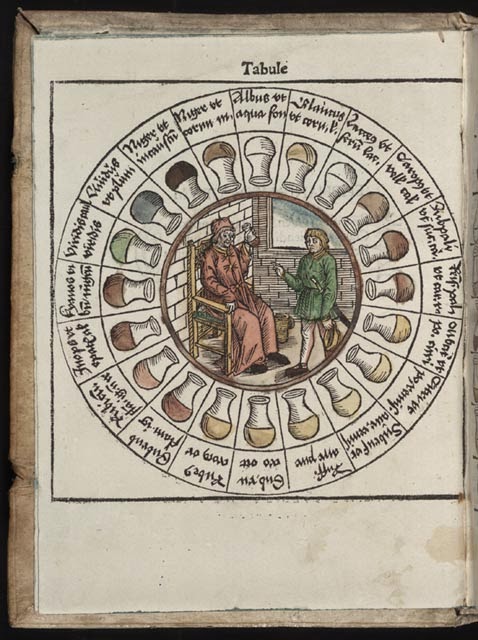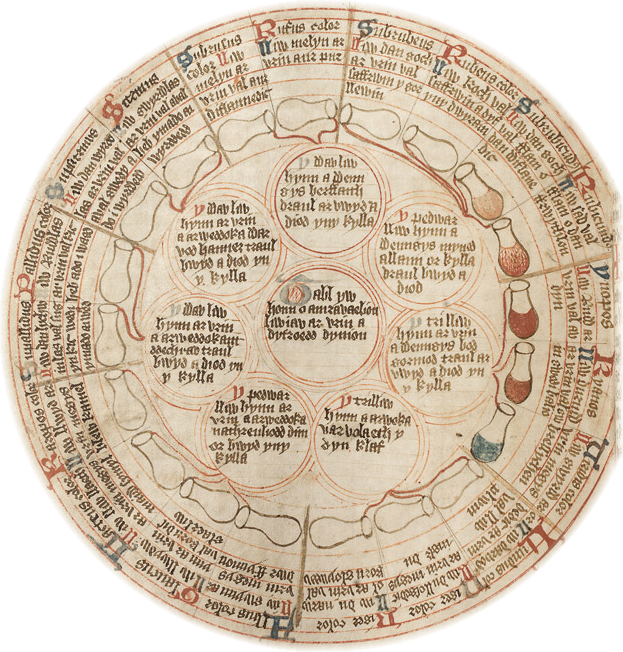Medieval History
In the name of many things (curiosity, structure, new things, companionship, and a future project with a biochemist), I am taking CHEM 240: "Structure and Function of Molecules." I am storing away beautiful phrases: "the molecular logic of life," "biochemical unity," "chemical personality," and "stereochemistry." I am in love with new words: "zwitterion" (a molecule with two charged protons), "carboxy terminus" (the carbon end of an amino acid), and "nucleotides" (subunits of DNA). There is some irresponsible revelry here, some pure delight and fascination with form that has no understanding of content. But it's only been a week. Maybe I will memorize all twenty amino acids (Tryptophan is in the category of Aromatic - it's practically poetry), maybe I will understand pH balance and buffering ranges. I will certainly try. It's very interesting to learn something without immediate application. That sounds absurd because to almost anyone else, chemistry is the field of immediate application and art history is, well, not. But the future project mentioned above continues the challenge set forth by BABEL-Boston 2012 ("Cruising in the Ruins: the question of disciplinarity in the post/medieval university") to "re-sound our disciplinary wells, while also, inevitably, bumping into each other and occasionally hooking up, like Democritus?s atoms." Oh man, I love this call so much, here's more: "Holding on to our disciplinary objects and methods and ways of knowing, while also keeping them open to futurity and the surprise of the stranger, let?s cruise each other. Let?s swerve, without steering, through the movement-filled ?void? that is the university, cyberspace, society, the world. Atoms, monads, particles, singularities, seeds, souls, kernels, cells, events, appearances ? gathering in molecules, crowds, assemblages, drifts, swarms, parliaments, strikes, clouds, hives, cascades, collisions, waves, one-night stands, spontaneous acts of metempsychosis, a fine spray of perfume through the atomizer, hanging in the night air." Here's the full call if you want to have a great day/life.
So I'm working with this biochemist on a paper on (for now let's say) the limits of perception and the strategies for seeing what we can't see. There's a range of possibilities from metaphor to the mesoscale (which you can size up here, and is well explained here). For now, though, I am seeing all sorts of new things. I feel the world revealed. I understand much better why my dad died so soon after he stopped drinking water (Le Chatelier's Principle (lovely phrase, isn't it? assuages the fear of our fragility) helped me see how devastating the loss of equilibrium of water is to cell and then very quickly organ function), though he hadn't eaten food to speak of for weeks and weeks. When we worked through a case study of Renal Tubular Acidosis (to understand acids and bases), I better understood the delicate pH balance that must be maintained in the blood by the kidneys. I think about urine a surprising amount (it's used all the time to fix colors in medieval stained glass and, it turns out, in a lot of metalworking - and you bet I'll be asking the professor about what's going on there) and so perhaps it was inevitable that medieval urine charts came to mind, and have become my image for biochemistry right now. They're beautiful images in their shape and color variation, they're instantly recognizable though not necessarily easily decipherable, and they were used (the one pictured here folded into the stitching of its manuscript) as a means to understand what the body might be saying about its own demise. Plus, as my children pointed out, it looks like a decoding ring. There's a lot to that. Eventually I'll be writing a lot about proteins, but for now, there's one statement I keep turning over in my mind: with a protein function follows form (this is a neat reversal of the aesthetic principle, form follows function). A protein can have the exact same genetic material but if it folds differently than the way it is supposed to (if its form changes) its function changes dramatically (whereas you can change the form of a house lots of different ways, ask architectural history, and it's still a house). That fascinates me no end because proteins fold at mind-blowingly (not a scientific term) rapid speeds, and how do you track that kind of veering?
- The Possibility Of Other Worlds
The Nuremberg Chronicle, 1493I've been thinking through a few of the ideas of John Buridan, the 14th century philosopher of the natural world and the cosmos via Aristotle in preparation for a talk next week-end with a colleague in Biochemistry about...
- Puddingwife
Cloudgate, Chicago - SundayHard to tell if this image is lovely or terrifying, isn't it? It has symmetry, which is pleasing, but also quite the abyss (and folds before the abyss) which can be terrifying (yes, calling Georgia O'Keeffe and Freud...
- Ages Of Man
The Ages of Man. 13th c. illuminationThere were many, many things to get done today, and I had another unexpected window of time on my own. But it was more than just a couple of hours: it stretched out luxuriously for 5 or 6 hours. And so existentialism...
- Better
Iris's little classmate is improving daily - eyes focusing, laughter, touching his mom. He's coming back, he's going to be coming back - it will take much longer than anyone wants it to ever ever, but he's going to do it. When I...
- Call For Sessions: Babel's 2nd Biennial Meeting
The time draws near -- December 15th, to be exact -- for session proposals for the 2nd biennial meeting of the BABEL Working Group, "cruising in the ruins: the question of disciplinarity in the post/medieval university," to be held in Boston from 20-23...
Medieval History
Biochemistry So Far
 |
| Ah yes, a urine chart |
 |
| This one folds up for easy referral |
- The Possibility Of Other Worlds
The Nuremberg Chronicle, 1493I've been thinking through a few of the ideas of John Buridan, the 14th century philosopher of the natural world and the cosmos via Aristotle in preparation for a talk next week-end with a colleague in Biochemistry about...
- Puddingwife
Cloudgate, Chicago - SundayHard to tell if this image is lovely or terrifying, isn't it? It has symmetry, which is pleasing, but also quite the abyss (and folds before the abyss) which can be terrifying (yes, calling Georgia O'Keeffe and Freud...
- Ages Of Man
The Ages of Man. 13th c. illuminationThere were many, many things to get done today, and I had another unexpected window of time on my own. But it was more than just a couple of hours: it stretched out luxuriously for 5 or 6 hours. And so existentialism...
- Better
Iris's little classmate is improving daily - eyes focusing, laughter, touching his mom. He's coming back, he's going to be coming back - it will take much longer than anyone wants it to ever ever, but he's going to do it. When I...
- Call For Sessions: Babel's 2nd Biennial Meeting
The time draws near -- December 15th, to be exact -- for session proposals for the 2nd biennial meeting of the BABEL Working Group, "cruising in the ruins: the question of disciplinarity in the post/medieval university," to be held in Boston from 20-23...
